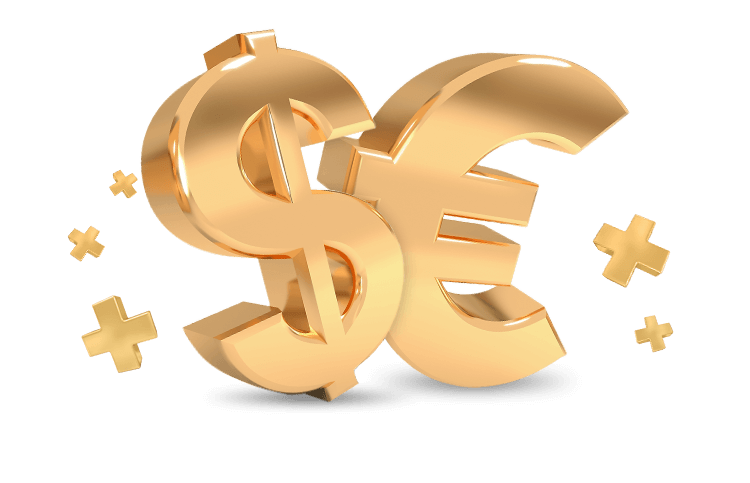What Makes Up the EUR/USD Forex Pair?
In this article, we will cover some important facts about the world’s most traded FX pair: the EUR/USD. Learn what makes the EUR/USD go up or down in value.
What does EUR/USD mean?
The term EUR/USD (EURUSD) refers to a comparison of the value of the euro, the shared currency of the Eurozone, to the value of the United States dollar, in terms of how many dollars it takes to purchase one euro. For example, when the “Euro”, as the pair is commonly known, is trading at 1.50, it would cost one Dollar and fifty cents to buy one Euro.
In the EUR/USD pair, the Euro is the base or transaction currency, and the Dollar is the counter currency or quote currency. In traditional Forex, you buy and sell the base currency and the counter currency at the same time. So, when you go long on the EUR/USD, you are buying the euro at the same time as you are selling the dollar. And when you go short on the EUR/USD, you are selling the Euro as you buy the dollar.

What makes the Euro rise or fall against the Dollar
The EUR/USD currency pair is one way to compare the strength of the EU’s economy to that of the U.S. economy, because anything that affects either or both of these economies can make the EUR/USD rise or fall. It may be helpful to look at an economic calendar to keep track of significant economic events in Europe or the U.S.
Some common events that can have an effect on the Forex pair include the release of unemployment data in the U.S., or in the member countries of the EU. Interest rate and Treasury yield updates from the Federal Reserve or the European Central Bank can also cause the EUR/USD to fluctuate.
From time to time, any EU Government policy moves and decisions that could have an effect on the Euro, may cause the value of the EUR/USD to rise, while moves and decisions that make the Dollar stronger may cause the value of the EUR/USD to fall. Alternatively, a weakened Euro can negatively impact the currency pair, while a weakened dollar may cause the pair to climb.
Another factor that can affect the Forex pair is geopolitical uncertainty. The U.S. and the EU are major trading partners, and traders often pay attention to the relationships between the blocs when tracking currency prices. Instability can have a significant impact on the value of the EUR/USD.
Finally, because the U.S. and EU economies are heavily dependent on private industry, even the performance of the major regional stock indexes in the U.S. or Europe can cause the Euro to rise or fall against the dollar.
Currency trading offers substantial opportunities for those looking to trade CFDs.
In CFD trading, your profit (or loss) is determined by reference to the price movement of the currency pair. You are not buying or selling the underlying asset.
However, it is essential for traders to be able to determine what factors can lead to price movements in the EUR/USD when trading this Forex pair. Keeping track of international events and understanding their implications can be an important advantage when trading this and other major Forex pairs.
